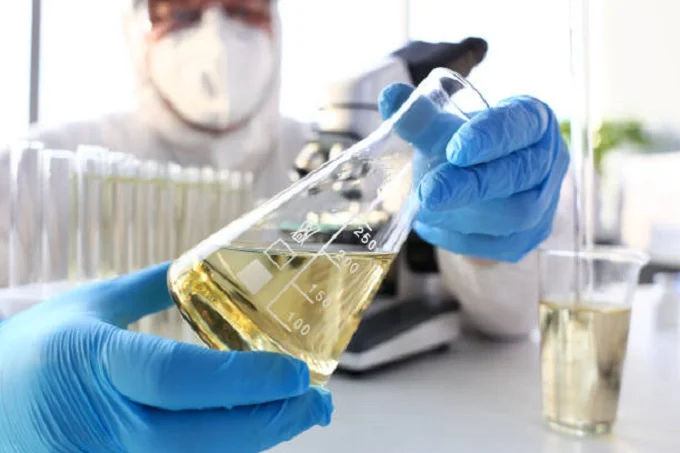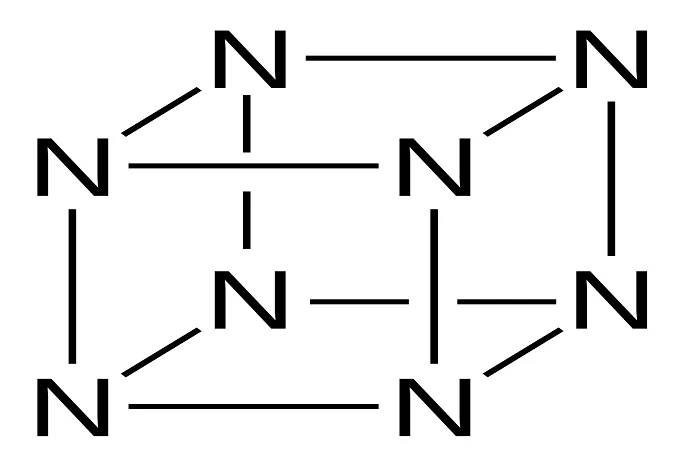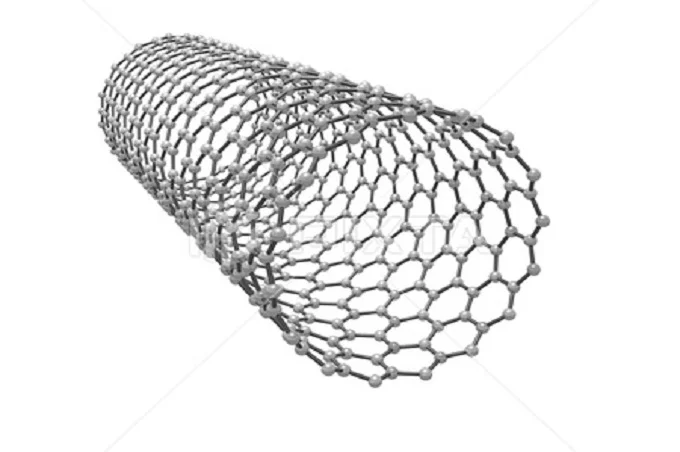The 8 most dangerous substances known

Humanity is constantly on the lookout for new methods to learn about the world around them. Clay bricks were formerly thought to be the hardest construction material, while the ice was thought to be the coldest. Today, knowledge’s boundaries have moved, and scientists are uncovering various interesting things that previously appeared incredible.
The following are the most dangerous substances currently known . Perhaps scientists will discover something even more severe in the future, but these materials are the first for now.
8 most dangerous substances known
1. The most explosive substance is Octaazacubane

Previously, the most explosive substance was an octogen synthesized back in 1942. In the late 90s, Octaazacubane was synthesized. This substance was so explosive that its relative effectiveness was 5 units.
To understand how much this is, TNT’s efficiency is taken as one, and the octanitrocubane next to octaazacubane has an efficiency of 2.38. At the same time, the detonation rate of octanitrocubane is 10600 meters per second, and Octaazacubane has 15,000, whereas TNT has 6900.
2. The most radioactive substance is polonium-210
When we hear about radioactivity, we first think of uranium as the most widely distributed substance. But it is not even close to polonium-210 in radioactivity. This chemical element is extremely toxic and carcinogenic.
It is enough to touch polonium-210 to be irradiated with a lethal dose. It is so toxic that the lethal dose of polonium-210 for an adult is from 0.6 to 2 micrograms when inhaled and from 6 to 18 micrograms when ingested into the digestive tract.
3. The blackest substance is vertically oriented carbon nanotubes

In the mid-10s, a material called Vantablack was presented. It consists of carbon nanotubes and absorbs 99.965% of the radiation incident in the form of visible light, microwaves, and radio waves. Because of this, it seems as if you are looking into the abyss.
For several years, the material remained the blackest until MIT scientists created another material consisting of vertically oriented carbon nanotubes. It already absorbs 99.995% of light. It seems that the difference between this material and the previous one is small, only some hundredths of a percent. But in fact, it is about 10 times darker than all the materials created before.
To get the latest stories, install our app here
4. The most flammable subst ance is chlorine (III) fluoride
It seems to us that the most flammable substance is gasoline, napalm, or other similar things. Indeed, a few drops of these substances are enough to create a large fire. But they do not go to any comparison with chlorine (III) fluoride, which is also called chlorine trifluoride.
The fact is that chlorine fluoride is a very strong oxidizer that is extremely reactive with most inorganic and organic materials. Spill it on any substance, and it initiates a fire. So that you understand, chlorine fluoride ignites even water.
Chlorine fluoride is so flammable that the Nazis, who studied it before the Second World War, concluded that it was a promising weapon and that it was too expensive and extremely dangerous even when stored, not to mention used.
5. The hottest substance is quark-gluon plasma
Quark-gluon plasma is an aggregate substance whose structure is difficult to understand even after graduating from one of the best physics institutes. For the first time, quark-gluon plasma was obtained at the RHIC accelerator in the USA in 2005. In 2010, scientists achieved a quark-gluon plasma temperature of 4 trillion degrees at the same accelerator. This is 250 thousand times hotter than the Sun. This temperature was obtained by colliding gold atoms at speed almost equal to light.
In the same 2010, at the Large Hadron Collider, scientists were able to obtain a quark-gluon plasma whose temperature exceeded 10 trillion degrees.
6. The most superfluid material is helium II
Superfluidity is a condition that occurs at extremely low temperatures, which allows it to flow through narrow slits and capillaries without friction. At the moment, helium II is considered the most superfluid material. It is so fluid that it can spontaneously start pouring out of the container upwards as if it is crawling along the vessel’s walls and trying to get out.
In addition, helium II can leak through solid materials since the complete absence of friction allows it to pass through microscopic holes, which would become an insurmountable obstacle in the normal state of helium. Because of this, you can notice how helium II, located in a sealed glass flask, begins to pour out through the bottom and other surfaces as if the glass had cracked.
In addition, helium II is the most efficient heat conductor, and its thermal conductivity is several hundred times greater than that of copper.
7. The most caustic acid is fluoroantimonic acid
If you remember the chemistry lessons, they told you that sulfuric acid is extremely dangerous because of its causticity. It can easily burn through the skin and corrode many metals. However, it is not the strongest acid. The strongest is considered to be fluoroantimonic acid, which is capable of literally anything. It is so strong that it is called a superacid because it can erode literally any surface, including glass, so it is stored in containers made of polytetrafluoroethylene.
Moreover, it causes a violent reaction upon contact with water, up to an explosion, and at the same time releases poisonous vapors, which, even in low concentrations, easily kill all living things in the room.
8. The hardest substance is an aggregated diamond nanorods

Previously, the hardest substance on Earth was diamond. But with technological progress, it was possible to obtain a harder material —aggregated diamond nanorods. It is obtained by compressing graphite under very high pressure, and in fact, it turns out to be something like a set of nanoscale diamonds. It is the least compressible and the hardest substance known to humanity, which has reasonably practical application in industry as tips for installations for cutting other materials.




